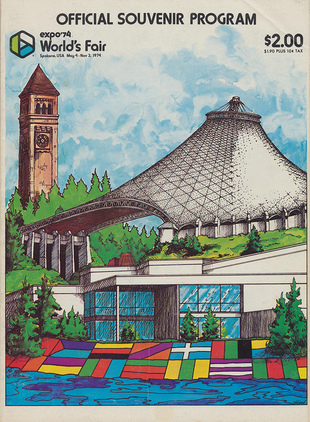|
J. William T. "Bill" Youngs, The Fair and the Falls: Spokane’s Expo ’74: Transforming an American Environment, Chapter Eighteen
|
"Expo Overview" courtesy of the Flickr Commons
|
Chapter Eighteen: Days at the Fair
|
SummaryExpo provided an abundance of sights, sounds, and tastes for visitors. The international and domestic pavilions provided entertainment as well as information on different nations, products, and environmental issues. In addition to these more formal exhibits, the fairgrounds were dotted with roving bands of musicians, gift shops, and restaurants. Nightly performances at the new opera house showcased the talents of both national and international stars. Finally, although influenced by outside events such as Watergate, Expo developed a life of its own, complete with scandals, conflicts, and romances.
|
Author reads from the Text
"Like a jigsaw puzzle"
"However carefully a tourist might plan a visit to Expo '74, the reality of the fairgrounds would soon disrupt those plans. The Expo maps sold at the entrance gates provided one indication of why the visitor would be confused. Even though Expo was a small world's fair, the map listed sixty-six locations, some containing as many as twelve separate exhibits or concessions. Nor were the exhibits distributed along straight avenues over a rectangular space, a common world's-fair design. Instead the fairground was shaped more like an oval, with forty-five acres of land sharing space with fifty-five acres of water. The configuration of pavilions and concessions looked like a jigsaw puzzle."
"Somber and unapproachable"
"During the summer of 1974, Spokane played host to 'the World Festival of Entertainment.' After a slow start in recruiting major shows, the fair and the city managed to schedule important events for virtually every week of the fair....On a single day the Expo staff greeted Lawrence Welk, Bill Cosby, and the Joffrey Ballet. A group of fair managers visited Expo '74 in mid-May and filed a rave review of the entertainment schedule: 'The entertainment schedule, including special outdoor events, coliseum spectaculars, and theater performances are in our opinion unequalled at any Expo held in the U.S. in the last thirty years.'"
"Fireworks"
"Each night thousands of Spokanites and tourists turned their eyes to the heavens from points all over the city....Erik Anderson, who was six at the time, was allowed to stay up until ten on Friday nights to watch the fireworks from in front of his family's home on the South Hill....Rik Smith could go out in his front yard on Gardiner Avenue at ten o'clock, and he'd take his oldest son, who was about two then, 'and watch them do fireworks.' Judy Humphrey, who worked for United Way at the time, had her own vantage point on the nightly show: 'The only place from our house we could see them was up on the second floor, out the bathroom window. If you stood up on top of the toilet, you could watch the fireworks.'"

